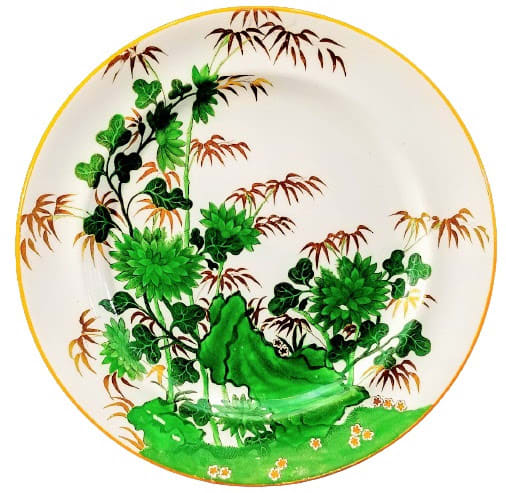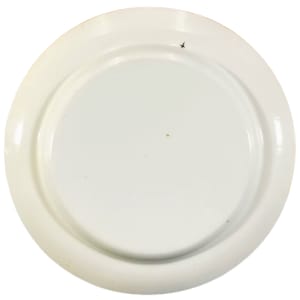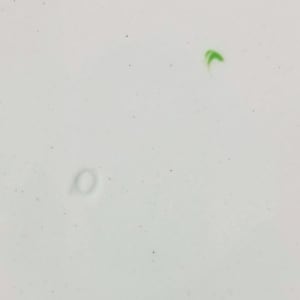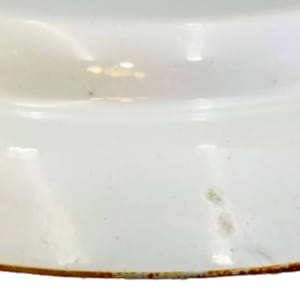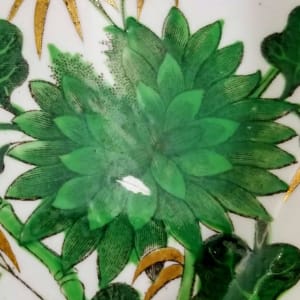Plate, 8.125 inches diameter. Black transfer with green clobbering and gilding. Maker is Spode.
The Spode Company has been producing high quality ceramic products on the same factory site since it was established by Josiah Spode I in the late 1700s. Josiah Spode was an apprentice of Whieldon in 1749. In 1762 Spode joined Turner and Banks on the same site as the Spode works of today. In the same year Turner left and Spode took over as manager. In 1770, he took over the works on mortgage, becoming sole proprietor and complete owner in 1776. In 1797 Josiah Spode I died and his son (also named Josiah) took his place. In 1805 Josiah Spode II invented a type of earthenware in which feldspar was also an ingredient – the now almost universal 'Stone China.' William Copeland had become a partner in 1797 and after Josiah Spode II died in 1827, William Copeland's son, William Taylor Copeland, bought the business from the Trustees of Josiah Spode III. Thus in 1833, William Taylor Copeland became sole owner. He took a partner, Thomas Garrett, and the firm became 'Copeland and Garrett', continuing so until 1847. The firm remained in the Copeland family until 1966, trading under a number of names, the Spode brand name was used alongside the Copeland name throughout the 19th and 20th centuries, often styled 'Copeland late Spode'. The firm was merged with the Carborundum Group of Companies in 1966 and in 1971 reverted to the original name `Spode'. It was subsequently merged with Worcester Royals Porcelain Co. to become Royal Worcester Spode Ltd. in 1976.
- Subject Matter: Floral & Botanical
- Collections: British Transferware (1800-1930), Spode
